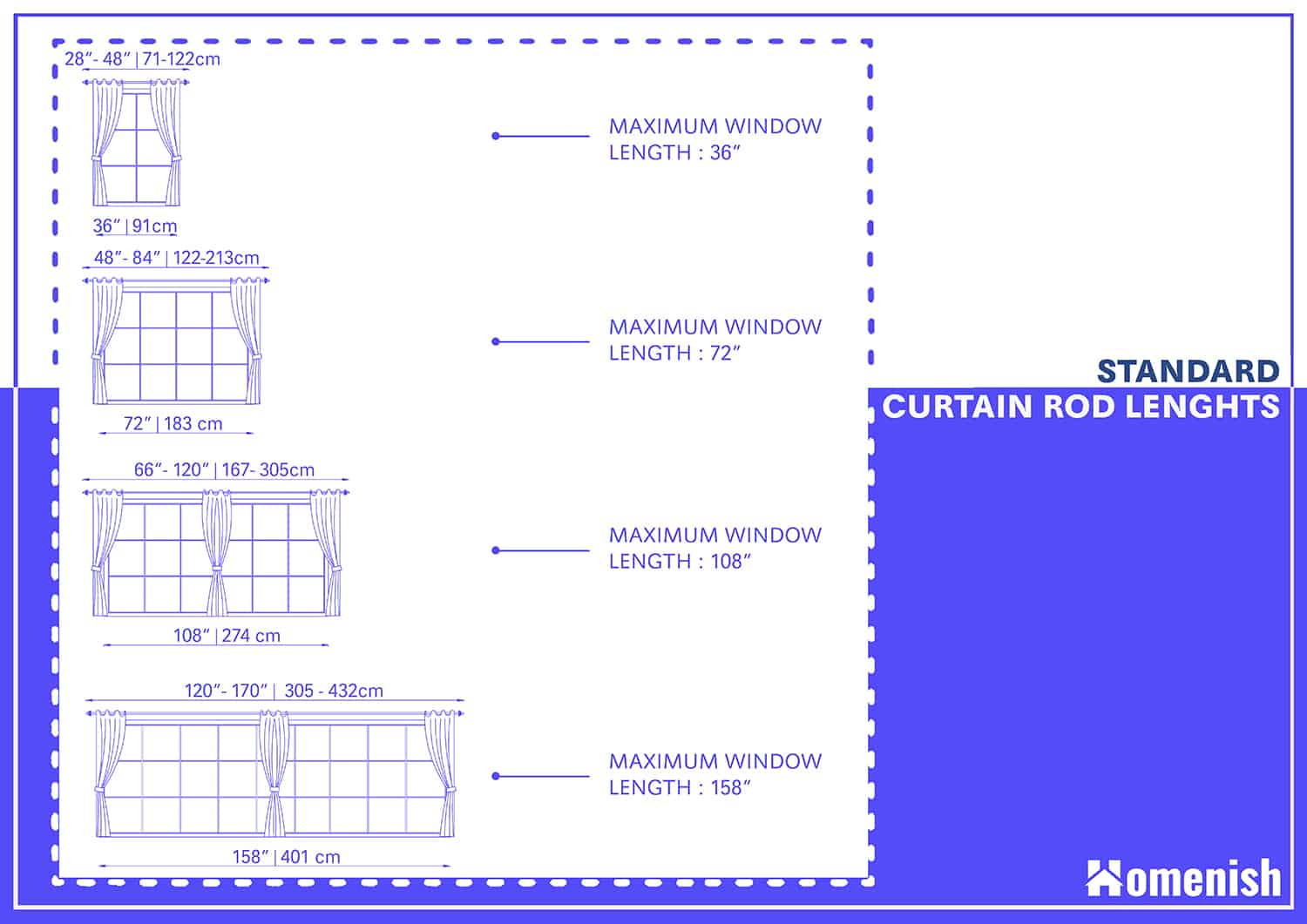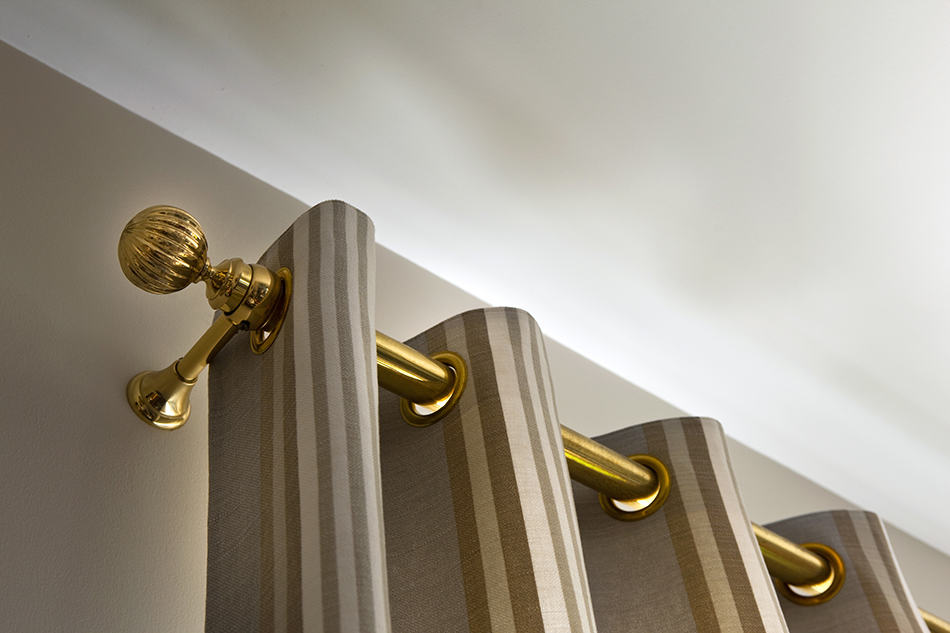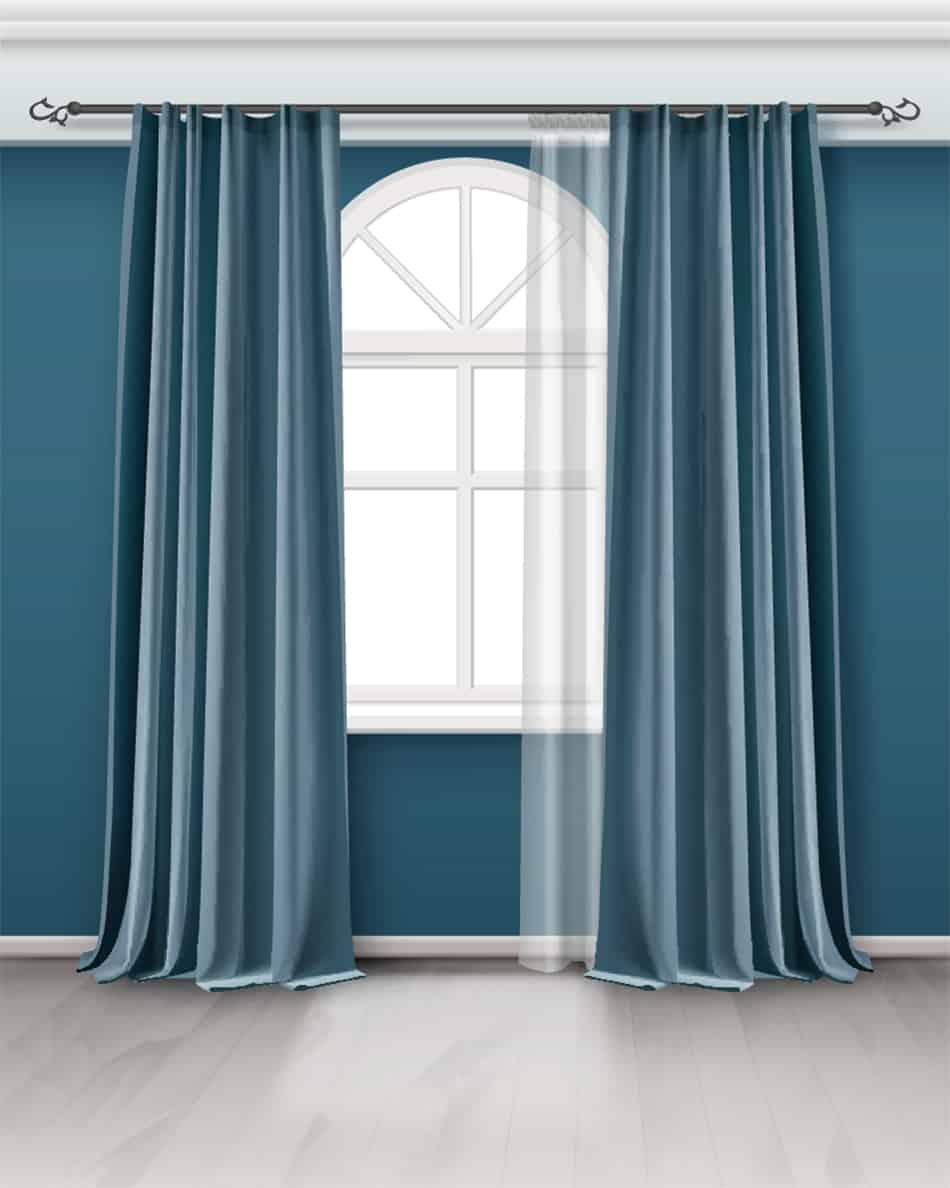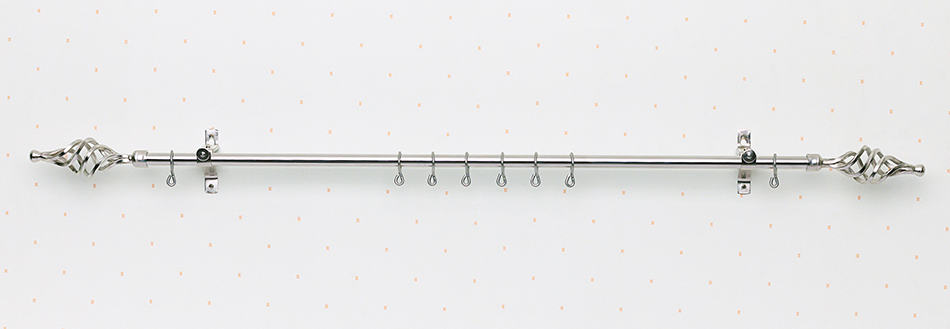Curtains are widely loved for their ability to keep out peeping toms. So if you’ve decided to put up some curtains, that’s great. Asides from bringing you some privacy and security, curtains help manage energy and control the natural light that gets indoors. They come in a wide variety of textures, designs, and fabrics, and when done well, curtains offer priceless aesthetic value.
But, before you start hanging up your curtains, there are a couple of important things you should know, like how to get the right size rods to hang up your curtains.
Standard Curtain Rod Lengths

Curtain rods come in standard sizes because windows have standard sizes. Standard curtain rods come in the following sizes.
- 120 inches – 170 inches
- 66 inches – 120 inches
- 48 inches – 84 inches
- 28 inches – 48 inches
You may find the curtain rod size chart above in handy. These rods each come in minimum and maximum length sizes, meaning they are extensible. This means you can stretch a 66-inch to a 120-inch rod. The rods can be adjusted to fit any length within their range.
28″ to 48″ rods are considered small and often used for small windows, like bathroom windows. Rods over 60″ are considered long, and 120″ rods are extra long.
To stay on the safe side and to make the window look good, you can deduct 6 inches on both sides from the maximum length of the curtain rods. Say a 120-inch – 17o-inch curtain rod should fit a 158″ window well.
How Do I Know What Size Curtain Rod I Need?
To know what size of curtain you need, you should first learn how to measure your doors and windows properly. You should also first decide how you want your curtains to hang with respect to your window openings.
For instance, if you want to have your room look brighter and bigger, then you must plan to get rods that are about 5″ longer than your window frame on both sides. Having your curtain rods extend a bit on each side of the window gives an illusion of wider windows, giving your room a breezier look.
If you don’t take these precautions before measuring your windows, your curtains may not work well when they’re finally up.
How to Measure Your Windows for Curtain Rods
The guidelines for measuring windows are pretty simple:
- Always use metal tape because they are a lot more reliable than the ones made from fabric.
- And always measure everything twice, so you’re sure there are no errors.
- Never measure your windows from frame to casing or casing to frame; rather, always measure from frame to frame or casing to casing. If you measure the frame to the casing, your curtains will look irregular after you put them up.
While measuring the width of your windows to determine the appropriate rod length, remember to add a few inches to your measurements; ideally, anything between 6″-20″ extra space is great so that there is some space left on the curtain rods for stackback. Stackback is the space your curtains occupy when pushed back to the end of the rods.
How Long Is the Longest Curtain Rod?
The longest curtain rods readily available are 120″-170″ long; however, if you need longer rods, it’s pretty easy to DIY them. You can make your rods as long as 240″.
How Long Can Curtain Rods Go Without Support?
Sometimes you can hang up curtains with no center brackets and not notice any sagging. This doesn’t always mean the curtains would hang up that way for too long. Sometimes it takes a couple of months to notice a sag.
This type of gradual sag is known as creep. A creep occurs over time, literally creeping in on you until you find your curtain rods falling off the wall.
The length of time it takes for a creep to occur depends on the weight of the materials used for your curtains and curtain rods. It’s always recommended to add some center support from the start when installing your rods, especially if you have long rods or heavy curtains.
How Can I Make My Curtain Rods Longer?
Ever found out that the length of curtain rods you need for your home is either too scarce or too expensive? You’re not alone; many people actually DIY their own extra long curtain rods by joining two curtain rods to make one. Here is how to do it.
Buy two sets of matching curtain rods and also get a joining splice. Remove the finial from one end of both rods; attach the joining splice to the open end of one of the rods, then insert the open end of the second rod. Don’t forget to attach center brackets when putting up your rods, as extra long curtain rods often need help staying up.
Should Curtain Rods Match Throughout the House?
While your curtain rods don’t need to match all around the house, it would look really good to maintain the same style or color curtain rods all through the house. It’s the perfect way to add some theme or feeling to your décor.
How to Pick the Best Curtain Rods
Curtain rods are so small compared to other pieces of home décor that it can be difficult to acknowledge how important they are to your home’s overall aesthetic. But the importance of curtain rods cannot be ignored. Pick the wrong ones, and you can throw off your entire decorative scheme. There are always a few important points to consider when choosing curtain rods for your décor.
First, before picking out your rods, you must consider the kind of fabric you want to use for curtains. If you are going to get heavy curtains, then you must pick a strong metal so that it’s sturdy enough to hold up your heavy curtains without falling.
If you pair a frail metal with heavy curtains, your curtain rods will eventually buckle under the pressure of your curtain’s weight. Always make sure you pair lightweight curtains with lightweight rods and heavy-weight rods with heavy-weight curtains.
Finally, remember to take accurate measurements of your windows before buying your rods. A curtain rod that’s too big or too small for your window frame will throw your entire room off balance.









